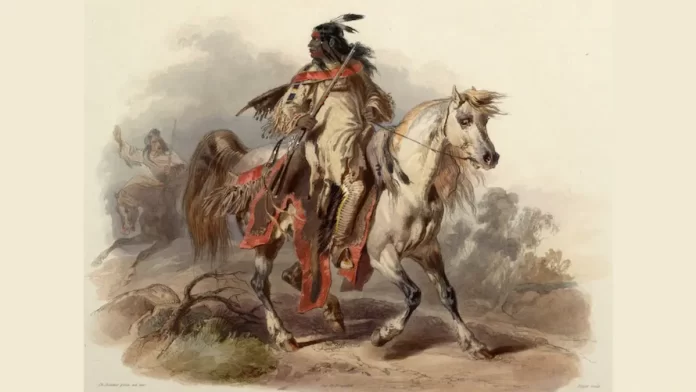The socio-religious landscape of ancient India was punctuated by numerous conflicts and upheavals, one of the most significant being the Kalabhra Revolt. This sixth-century uprising was a formidable challenge to the Brahmanical order and marked a crucial turning point in the history of South India.
Drawing from R.S. Sharma’s “India’s Ancient Past,” we can explore the roots, significance, and legacy of the Kalabhra Revolt, and compare it with similar movements in medieval and modern India. Additionally, its socioeconomic impact on the Bahujan movement and contemporary relevance can be examined.
The Kalabhra Revolt: Roots and Causes
The Kalabhra Revolt, occurring in the sixth century, stands as a landmark event in ancient Indian history. The Kalabhras, seemingly a tribal people, led a powerful peasant protest against the landed Brahmanas and the established social and political order. This revolt was particularly impactful at the cost of the Cholas, and it also affected the Pallavas and their neighboring contemporaries.
The period between AD 300 and 750 was crucial for state formation and agrarian expansion in the peninsula. However, the historical records about the events at the tip of the peninsula after the eclipse of the Cholas, the Cheras, and the Pandyas are sparse. The Kalabhras, who are often described as “evil rulers” in traditional accounts, overthrew numerous kings and established their control over the Tamil land. They revoked the brahmadeya rights—land grants given to Brahmanas—in numerous villages, signaling a direct attack on the privileges and authority of the Brahmanas.
The Kalabhras were likely of Buddhist persuasion, as they patronized Buddhist monasteries, further underscoring their opposition to Brahmanism. The revolt was so extensive and formidable that it could only be quelled through the combined efforts of the Pandyas, the Pallavas, and the Chalukyas of Badami.
Medieval and Modern Parallels
The Kalabhra Revolt set a precedent for later socio-religious movements in India. In medieval India, the Bhakti and Sufi movements continued to challenge the Brahmanical orthodoxy.
Saints like Kabir, Ravidas, and Guru Nanak criticized the caste system and ritualism, advocating for an inclusive and personal form of devotion that resonated with the principles of the Kalabhra revolt.
In modern times, the struggle against Brahmanism was epitomized by figures like Jyotirao Phule, B.R. Ambedkar, and Periyar E.V. Ramasamy. Ambedkar’s relentless fight for Dalit rights and his call for the annihilation of caste drew inspiration from earlier rebellions against Brahmanical dominance.
The Non-Brahmin movement in South India, led by Periyar, sought to dismantle the caste hierarchy and promote rationalism and social justice, echoing the Kalabhra’s defiance of the Brahmanical order.
Socioeconomic Significance for the Bahujan Movement
The Kalabhra Revolt holds great socioeconomic significance for the Bahujan movement, which represents the interests of the majority of Indians historically marginalized by the caste system. The Kalabhra’s challenge to Brahmanical privileges and their support for Buddhist institutions provided a foundation for later efforts to challenge caste-based discrimination.
The revolt demonstrated the potential of a united peasant and tribal uprising against an oppressive social order, inspiring contemporary Bahujan leaders and activists. The Bahujan movement continues to draw on this legacy, advocating for the upliftment of marginalized communities and the establishment of a more just and equitable society.
Contemporary Relevance
The contemporary relevance of the Kalabhra Revolt lies in its enduring impact on the fight against caste-based oppression and discrimination. The Kalabhra’s defiance of the Brahmanical order and their promotion of Buddhism resonate with modern ideals of equality, human rights, and social justice. In an era where caste discrimination persists, the Kalabhra Revolt serves as a reminder of the long-standing struggle for dignity and equality.
Moreover, the revolt highlights the importance of challenging established orthodoxies and promoting inclusive and progressive ideologies. In today’s context, where social hierarchies and exclusionary practices continue to exist, the legacy of the Kalabhra Revolt inspires ongoing efforts to create a more inclusive and egalitarian society.
Conclusion
The Kalabhra Revolt was a landmark event that challenged the socio-religious hegemony of the Brahmanical order in ancient India. Drawing from R.S. Sharma’s insights, we see how the Kalabhras’ defiance of Brahmanical dominance and their support for Buddhism laid the groundwork for later rebellions against caste-based discrimination and ritualistic orthodoxy.
The revolt’s socioeconomic significance for the Bahujan movement and its contemporary relevance underscore the enduring impact of this ancient struggle for equality and justice. As we continue to confront issues of caste and social inequality, the lessons from the Kalabhra Revolt remain profoundly relevant and inspiring.
